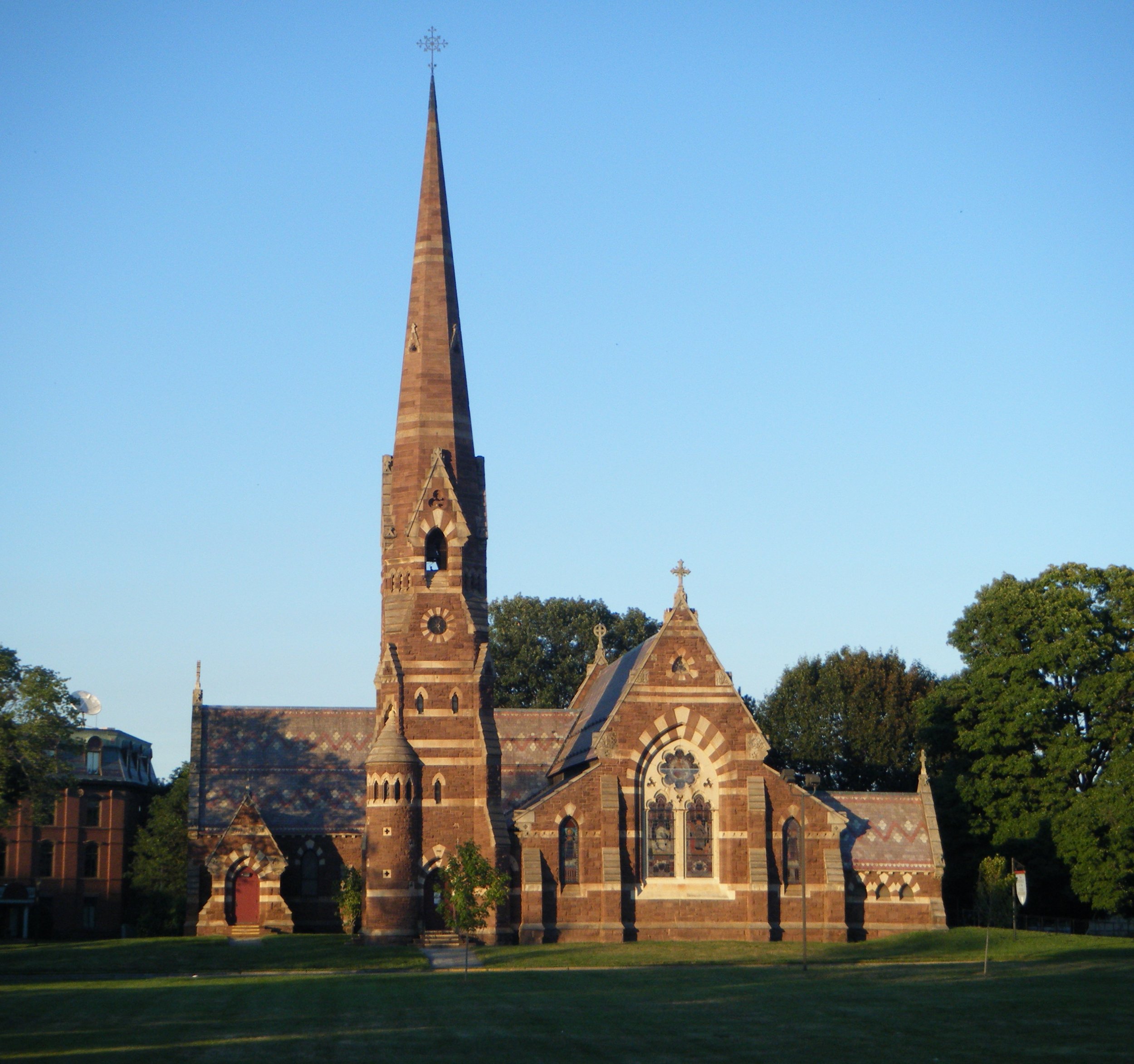
Church of the Good Shepherd
The Church of the Good Shepherd was consecrated on January 28, 1869. It was built by Elizabeth Colt in memory of her husband, Sam, who died on January 10, 1862. Elizabeth inherited Colt Patent Firearms upon Sam’s death and, in spite of the facts that she had no prior business experience, and that it was the height of the Civil War, and Colt’s was the largest firearms factory in the U.S., she determined to run the company. At the same time, she set about to build a church as a memorial to Sam and to their three children who died in infancy. She viewed this project as a continuation of Sam’s plan to create a new town, Coltsville, to surround his factory.
Image by George A. Chien
After an unsatisfactory relationship with another architect, Elizabeth hired Edward Tuckerman Potter to design her church. Potter is well known for designing Mark Twain’s house in Hartford along with many other prominent buildings. The church is a remarkable example of High Victorian Gothic Revival architecture. Particularly noteworthy is the Armorers’ Porch, a special entrance designed to attract and welcome workers from the Colt Armory. The entry is adorned with carved stone gun parts and gun-making tools worked into what, at first glance, appear to be normal building elements.
Particularly noted at the time the church was consecrated was the memorial window depicting Sam Colt as Joseph in Egypt prospering through his persistence. Equally sensational was the carved wood and plate glass screen separating the sanctuary from the children’s area in the transept. When Elizabeth died in 1905, she left a fund of $800,000 to be managed by a group of trustees. The trust has been the source of money to maintain the church and companion parish house as well as the Colt mansion, Armsmear.
Flood of 1936: Hartford from the south. Image from CHS.
The church was beset with numerous disasters. On January 15, 1893, a basement furnace fire caused extensive damage. In May of 1899, a large marble baptismal font fell through the baptistery floor into the church cellar. The font was a gift from Elizabeth’s sister, Hettie, in memory of Elizabeth’s three passed children. The font was repaired, and the floor was restored and shored up. In 1936 and 1938, record floods finally overtopped the dike Sam Colt had built to protect his factory village and caused significant damage to the church. At high water in 1936, the flood rose above the top of the main entrance arch in the church tower.
Image by George A. Chien
Due to the construction of the current, taller dike along the Connecticut River, the water table in Coltsville receded. This caused decay of the wooden pilings that supported the church. By the late 1960’s, the church had begun to settle and the top of the steeple had leaned three feet north. The building was condemned. Luckily, the Trustees of the Colt Bequest were able to assemble funds adequate to shore up the structure and it has been stable ever since.
The church and parish house were added to the National Register of Historic Places on February 20, 1975, and were included as elements of the Coltsville Historic District National Historic Landmark on October 6, 2008. They were then included as contributing assets when the Coltsville National Historical Park was authorized by Congress in December 2014.
The church continues as the home for a small but active congregation today. It holds two services each Sunday, one in English and one in Spanish. It also provides worship space for a Pentecostal congregation. For more information, click here. Group tours of the church and parish house may be arranged by calling the church office at 860-525-4289. A 3D virtual tour is available here.




